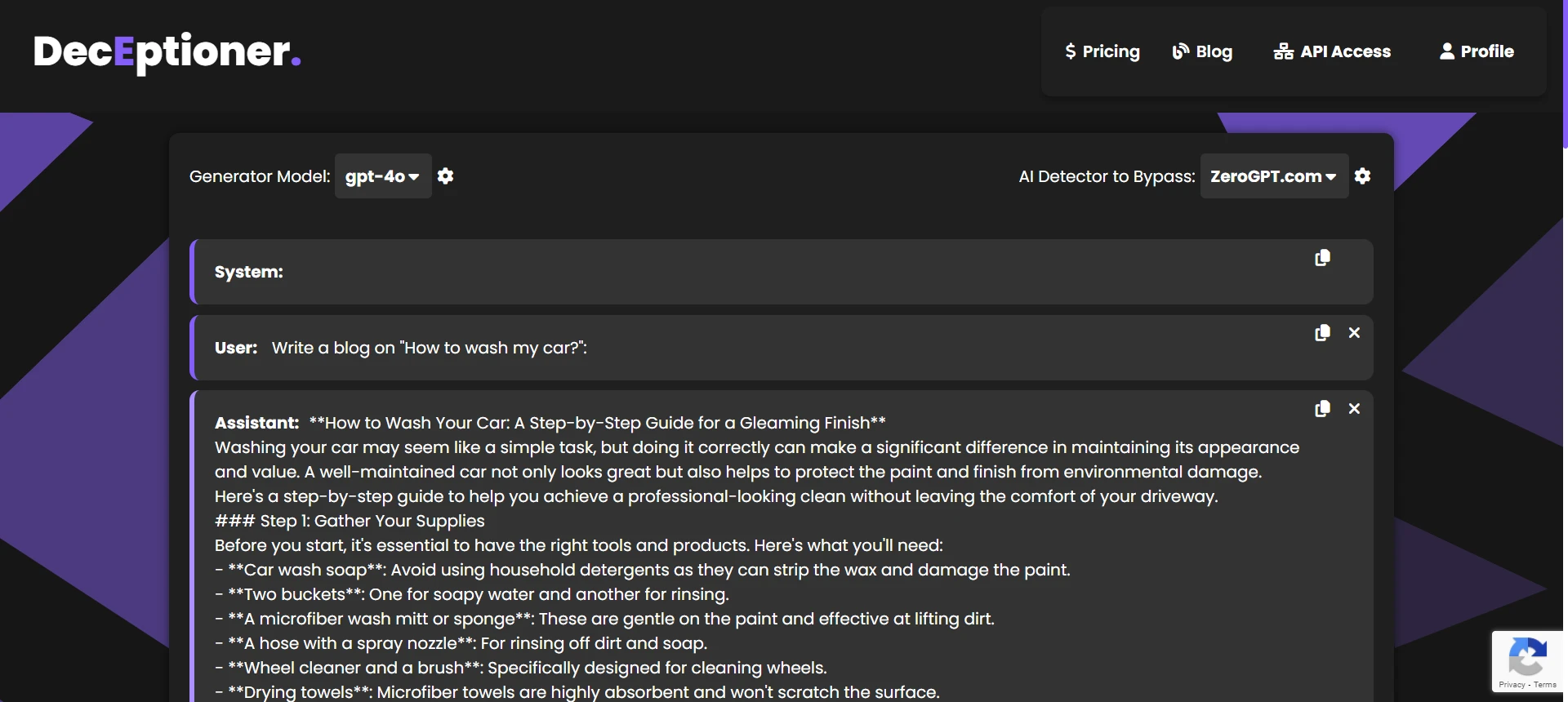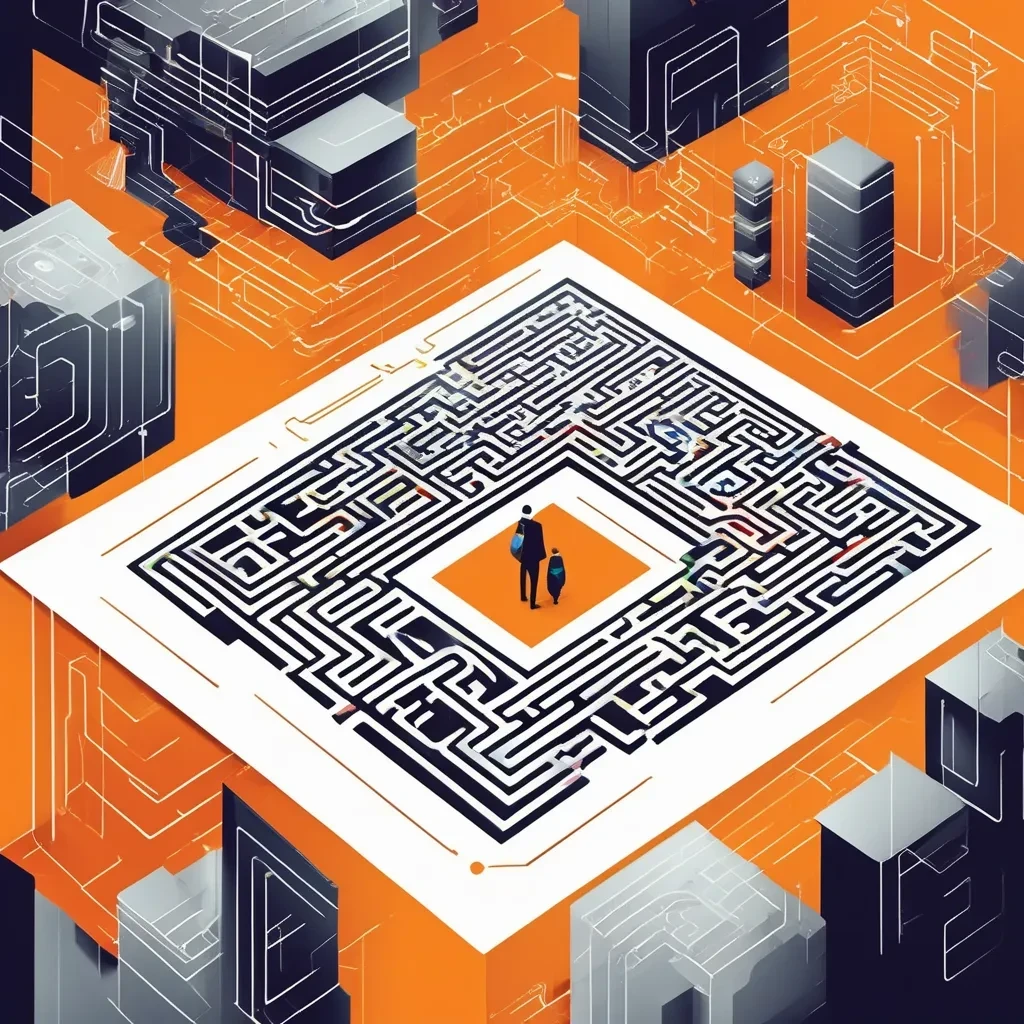As we all know it ZeroGPT is a free AI-text detector launched in 2023 that claims to tell you whether any text was written by a human or an AI like ChatGPT. They promise a seamless experience because you don’t even have to sign-up. But the biggest question that everyone is asking is: Is it even reliable? The short answer is NO. The longer answer is that the devil lies in the details. Keep reading to know more about it.
ZeroGPT took the internet by storm in 2023. Millions of students, teachers, editors, and even SEO writers started flocking to it every single month. It is widely used because it’s free and easily claims “98% accuracy” on their website. However, it is riddled with false-positives and even historical documents like the U.S. Constitution and the Book of Genesis have been flagged as AI-written. If ZeroGPT can’t even figure out that something is centuries-old text, you can clearly see how big of a mess it is.
Why ZeroGPT's Popularity Doesn't Mean It's Accurate?
When it launched, ZeroGPT basically appealed to everyone: it’s fast, free, and you don’t have to register to use it. They say that they have “98% accuracy,” but many independent tests and user experiences paint a different picture. There was even a time, around late 2024, when they boasted 2.5 million monthly active users. About 65% of them were students and teachers. Type “AI text detector” in any search engine, and you’ll see ZeroGPT at the top along with GPTZero or Turnitin’s AI detector.
However, OpenAI themselves shut down their AI-text classifier in 2023 for low accuracy. It was only identifying AI-text 26% of the time. This fundamental challenge in detecting AI means that any third-party tool (like ZeroGPT) that tries to do the same job basically inherits a lot of these flaws.
Also Read: Is ZeroGPT a good AI detector?
High False Positives: The Data Tells the Real Story
You might be wondering why so many people find ZeroGPT to be unreliable. Well, the numbers don’t lie:
- Controlled Test (160 samples): We tested 160 pieces of text, half human-written and half AI-generated. Overall, ZeroGPT got 73.8% correct, which might sound decent until you realize that 1 in 5 human texts were wrongly flagged as AI. The false negative rate (where it missed AI texts) was around 32%. That is quite high for something that claims to be “98% accurate.”
- Independent Detector Comparisons: In another study, ZeroGPT would randomly assign about “30% AI probability” to purely human text, whereas a rival detector gave only ~4% on the same pieces. Not only that, but about half the human texts incorrectly got flagged AI in that study.
- Academic Studies: Many academics saw that ZeroGPT was wrong more times than expected: around 83% of human-written research abstracts flagged as AI, 62% of social-science papers flagged as AI, and up to 60% of essays from English majors labeled as AI. That is absolutely making the lives of genuine writers miserable.
- Real-World Anecdotes: There are countless stories of well-written work being flagged “100% AI.” One graduate student’s thoroughly researched essay got an immediate zero, all because ZeroGPT insisted it was AI-generated. People noticed that once they introduced grammatical errors or random typos, ZeroGPT changed its verdict to “Human.” You can guess how ridiculous it is that your grade might depend on how many typos you leave in your essay.
Also Read: Does ZeroGPT gives false-positives?
Overfitting to Superficial Patterns
One of the biggest reasons ZeroGPT goes so wrong is because it hunts for superficial writing patterns rather than actual meaning:
- Predictability (Low Perplexity): AI models often generate “bland,” predictable text. This is called low perplexity. However, a polished human text also appears “predictable” to the algorithm, so ZeroGPT flags it as AI.
- Uniform Style (Low Burstiness): AI text can be uniform, with consistent sentence lengths and style. But guess what else uses consistent sentence lengths? Legal documents, official statements, and older texts like the U.S. Constitution. So, ZeroGPT confuses them for AI.
- Repetitiveness & Common Tokens: Overusing words like “In conclusion,” or even bracketed citations like can make ZeroGPT think it is AI. Perfect punctuation and zero spelling mistakes also triggers an AI label.
- Generic Model Architecture & Overfitting: ZeroGPT basically tries to match patterns from a training set. It sees polished writing, or formal style, or certain phrases, and lumps them all into “AI.” It can’t really understand the context or content; it just pattern-matches. And as AI text becomes more advanced, these old-fashioned detection methods are even less reliable.
Why ZeroGPT Still Attracts Millions of Users
- Tremendous Demand for an AI-Detection Solution: Everyone (teachers, universities, businesses) wants a quick fix for dealing with AI-generated text. So, even a flawed tool ends up seeing massive traffic.
- High SEO Visibility: They rank at the top when you search for “AI text detector,” plus it’s free and requires no sign-up. People just try it first.
- Few Affordable Alternatives: GPTZero is also known for false positives, and it initially required login. Originality.AI is paid, and Turnitin’s solution is restricted to institutions (and also criticized for false positives). So, many rely on ZeroGPT by default.
- Misplaced Trust & Confident Claims: ZeroGPT boldly claims “98% accuracy,” and uses persuasive language like “Your text is 100% AI/GPT generated” that convinces many people into thinking it is extremely accurate.
- Continuous Updates & Extra Features: ZeroGPT shows you a “percentage score,” sometimes calls text “Mixed,” and ties into Telegram or WhatsApp bots. People assume these updates means it’s getting better, when in reality the core detection flaws remain.
Also Read: How accurate is ZeroGPT compared to Turnitin?
Conclusion & Takeaways
ZeroGPT’s high false positive rate is proof that these AI-detection tools rely heavily on shallow, surface-level patterns. They don’t actually understand what they’re reading, so if your text looks “too neat,” or “too uniform,” or if you used certain “AI” cues, you risk being flagged as AI even if you wrote every single word yourself.
Our opinion? Don’t trust ZeroGPT blindly. If you are in an academic setting, or in any scenario where your reputation matters, don’t rely on it to prove your work is genuine. Instead, you can try multiple detectors or ask for a second opinion from a human. If you’re a professor grading work, be aware that ZeroGPT might unfairly penalize students. Also keep in mind that the more advanced AI gets, the more these basic detectors fail to keep up.
The Bottom Line
ZeroGPT might boast about “98% accuracy,” but in reality it can easily flag upward of 20% to 50% of human-written texts as AI. So, keep your eyes open and take those “AI percentage scores” as just an algorithmic guess. If you need reliable proof of originality, it is better to do your own checks, verify sources, and use your own judgement. After all, no AI detector is going to do a perfect job right now, and ZeroGPT is definitely not an exception. It’s probably a good idea not to stake your entire academic or professional reputation on a single flawed tool.

![[HOT TAKE] Why is ZeroGPT so bad?](/static/images/why-is-zerogpt-so-badpng.webp)
![[G0] Can GPTZero Humanize AI Text?](/static/images/can-gptzero-humanize-ai-textpng.webp)
![[DIRECT] Best Affordable AI Humanizers (That Still Work in 2025)](/static/images/best-affordable-ai-humanizerspng.webp)
![[HOT] Can You Compare ZeroGPT With Other Top Tools?](/static/images/can-you-compare-zerogpt-with-other-top-toolspng.webp)





